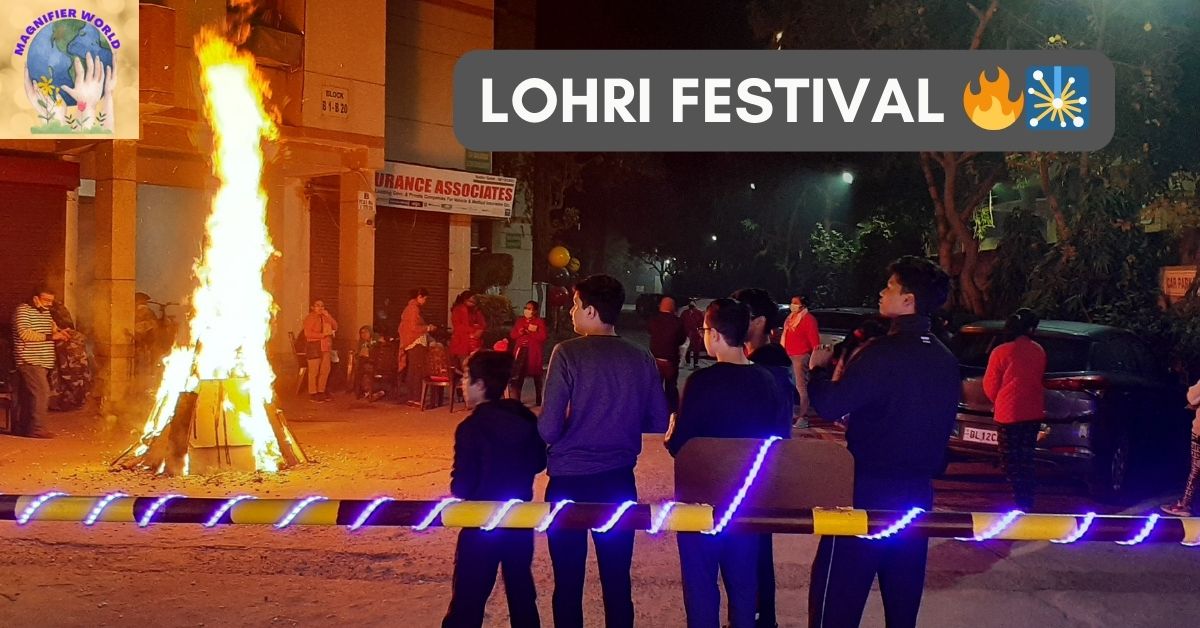It’s time to enjoy the Lohri festival with vibrant flames themselves, bringing households and communities together to have fun in the harvest season and offer gratitude for the beautiful plants.
Lohri is a celebrated festival across Northern Indian states like Punjab, Haryana, Himachal Pradesh, Rajasthan, Jammu, and Kashmir.
While it’s often related to Sikh communities, its roots go beyond any single religion. Following the historical Bikrami calendar, which is a mix of lunar and solar cycles, Lohri’s date lands near the Hindu festival of Makar Sankranti.
Also referred to as Lohadi or Lal Loi, it’s miles celebrated to mark the harvest of the rabi vegetation and the quiet of the winter solstice, meaning the onset of longer days and shorter nights.
As all of us await to have fun Lohri in 2024 with plenty of zeal and enthusiasm, study directly to discover the date, time, rituals, and significance it holds in India.
When will the festival of Lohri be celebrated in 2024: on the 13th or 14th of January?
This year, there appears to be some discord over the exact date for Lohri, with debate over whether or not it needs to be marked on January 13 or 14.
The Drik Panchang, or Lohri festival, will be celebrated on January 14, 2024, that is, on Sunday, implying that Makar Sankranti, a similar excursion, may be celebrated on Monday, January 15, 2024.
What is the most favourable time for the Lohri festival puja?
The spiritual ceremony timings for this year’s Lohri competition in 2024, in keeping with Drik Panchang, are as follows:
- Tritiya Tithi: as much as 07:59 AM, January 14
- Chaturthi Tithi: up to 04:59 AM, January 15
- Brahma Muhurta: 05:27 AM to 06:21 AM
- Abhijit Muhurta: 12:09 PM to 12:51 PM
Holding remarkable significance in the lives of the people of North India, Lohri marks the hit harvest of wintry weather vegetation of sugarcane, wheat, and mustard. It is a time for farmers to express gratitude to the Surya Devta (Sun God) and Agni (Fire God) for agricultural prosperity and adequate harvesting of vegetation seeded before the wintry weather season.
Additionally, as Lohri falls on the 13th to 14th of January every year, it also indicates the end of the iciness solstice, which is when the days begin to get longer. This trade is widely known as an usher in heat and happiness.
Rituals: How is Lohri celebrated?
Lohri, a colourful pageant that fosters a feeling of togetherness, gratitude, and team spirit among people, is well known for several rituals, including the festive spirit and cultural importance of the event.
Lohri starts offevolved with the lights of a bonfire, symbolising the quit of wintry weather and the advent of hotter days, wherein human beings provide objects like peanuts, jaggery, sesame seeds, and popcorn to the hearth while reciting prayers. These services, frequently called prasad, are allotted among attendees for accurate good fortune.
During the celebration of the pageant, human beings interact in song and dance, along with the conventional Punjabi dances of Bhangra and Gidda, making a song people music even as carrying festive attire and playing conventional dishes like sarson da saag, makki ki roti, gajak, and reward.
Hence, Lohri allows social bonding with one’s own family and network of individuals, which fosters a sense of unity and festivity, making it one of the most loved fairs in India.
We wish all our readers a happy Lohri 2024, the festival of joy and enthusiasm. May this Lohri convey you abundance, good fortune, and cherished moments with your family!










